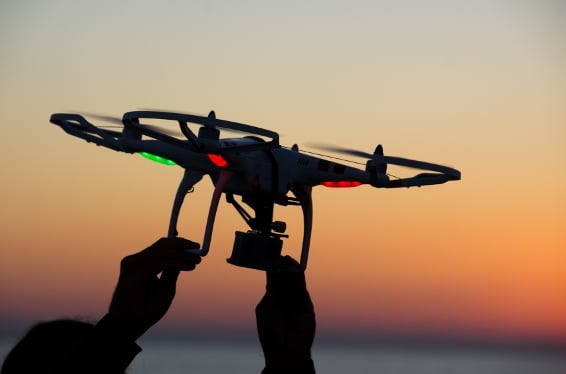

Drones are a hot topic in insurance and aviation circles and, as Clyde & Co’s James M Cooper and Jess Harman write, the fast-developing nature of the industry presents challenges for operators, insurers and regulators alike
The Civil Aviation Safety Authority (CASA) is responsible for the regulation of drones in Australia. Led by the work of CASA, Australia has been recognised internationally as a leader in drone regulations.
Current rules for commercial drone operations
The most recent regulations took effect in September 2016 and are contained within Part 101 of the Civil Aviation Safety Regulations. Currently, the key regulatory considerations for an operator considering commencing commercial drone operations include
• The applicable rules depend on the size of the drone. Commercial operators using the following drones are not required to be licensed or certified by CASA:
- “very small” drones (ie weighing less than 2kg)
- “small” drones (ie between 2kg and 25kg) operated by private landowners on their own property
- “medium” drones (ie between 25 kg and 150kg) operated by private landowners on their own properties (subject to some additional licensing requirements)
• They must comply with the ‘Standard Operating Conditions’ unless special authorisation is obtained from CASA. Those conditions are:
- Only fly during the day and keep the drone within visual line of sight.
- Never fly higher than 120 metres above the ground.
- Keep the drone at least 30 metres away from other people.
- Keep the drone at least 5.5km away from controlled airspace.
- Never fly over populous areas such as beaches, parks and sporting fields.
- Never fly over or near an area affecting public safety or where emergency services are underway, without prior approval.
- Only fly one drone at a time.
• CASA must be notified at least five days before the operator’s first commercial flight
• any commercial drone operations using a large drone or occurring outside of the Standard Operating Conditions require authorisation from CASA and are likely subject to further licensing and/or certification requirements.
New rules on the way?
Although many have welcomed the flexible regulatory approach adopted by CASA, others have voiced concerns that the regulations do not address the potential safety threats posed by the rapidly expanding drone industry.
Seemingly prompted by pressure from the industry, the Australian Government is undertaking a substantive review of the current regulations, which is being conducted by CASA as well as a separate Senate Inquiry.
The ongoing review focuses on several regulatory approaches that CASA could adopt to manage drone-related activities, including:
• introducing a mandatory registration system for all drones
• using geo-fencing technology to contain drones within a particular area, or to exclude drones from sensitive areas (for example, in the airspace of airports) in order to prevent drone interference with other aircraft activity
• compulsory training or education requirements for all drone operators
Drone operations in Australia: need to know
With the proliferation of drones in recent years at both a commercial and recreational level, there is now a wealth of information available in the public domain for prospective drone operators. This, however, creates its own problems for those seeking to navigate through what can sometimes be a complex and confusing set of rules and requirements.
With that in mind, the following are some key need-to-know features of drone use in Australia for those exploring a move into this exciting field.
• While drone operators in Australia are not currently required by the regulations to take out insurance, it is important that steps are taken to obtain appropriate insurance coverage. This is particularly so because of the risk of potentially large exposures for third party damage caused by drones on the ground (eg property damage or personal injury).
• Drones are increasingly becoming a target for cyber hackers. It is expected that greater focus will be given to government regulation addressing the vulnerability of drones to such attacks, aswell as the availability and development of insurance products covering cyberspecific risks for drones.
• Commercial users will need to take heed of the different safety measures that CASA is currently considering to address concerns raised by the industry, whether in the form of more stringent registration requirements, the introduction of geo-fencing technology, or increased training requirements.
• Penalties for the breach of operating conditions by drone users in Australia include fi nes, and possible imprisonment (for more serious infringements). It is expected that increased resources will be made available to assist CASA in identifying potential breaches by drone operators and enforcing penalties.
• It is important that brokers advising clients who have commenced or are considering the commercial use of drones remain apprised of regulatory developments, given the fl uid nature of this industry. In addition to the ongoing government reviews in Australia, the UK has recently announced a new drone bill tightening the existing laws there. The success or otherwise of new drone regulations overseas is likely to have a signifi cant bearing on the approach that the Australian authorities adopt moving forward
